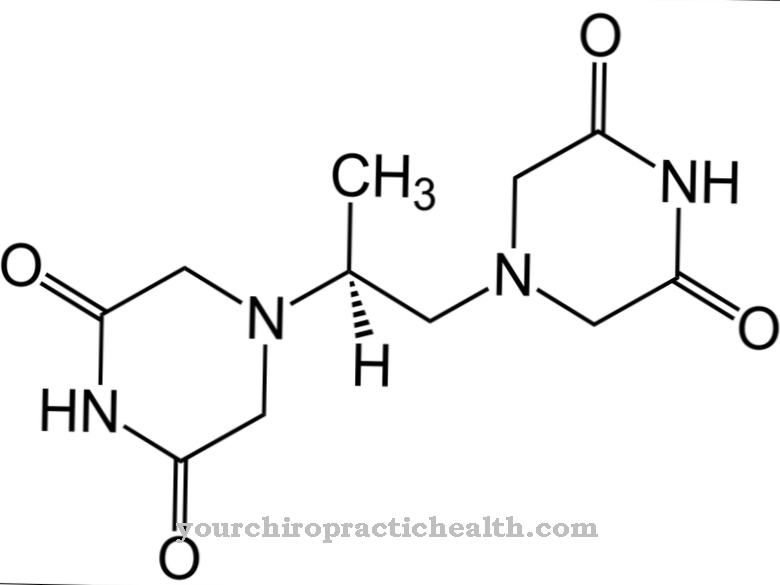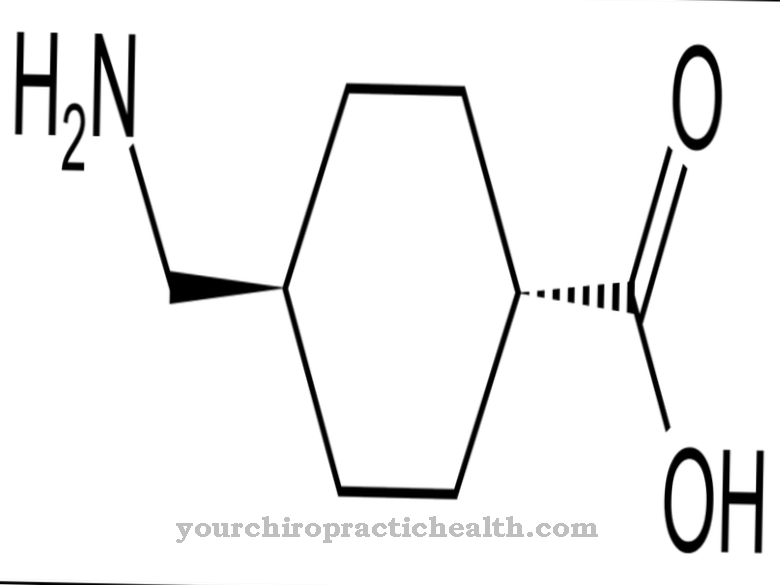At Oxprenolol it is a highly effective medicinal drug. It belongs to the class of drugs known as beta blockers and has been around since 1996 a. a. for the therapy of high blood pressure (hypertension) used. The substance is processed in both mono- and combination preparations.
What is Oxprenolol?
Oxprenolol is a medicinal ingredient that is used in human medicine. It was developed in 1996 and has been used since then to treat cardiovascular diseases such as arterial hypertension (high blood pressure).
Due to its pharmacological properties, the whitish to crystalline powder belongs to the beta blocker class of active ingredients. These are drugs or active ingredients that block the body's own adrenoceptors from releasing the stress hormones noradrenaline and adrenaline. This results in a reduction in blood pressure and heart rate.
Oxprenolol can be found in both mono- and combination preparations. The latter are drugs that combine different active ingredients and can therefore be used for a variety of diseases. In chemistry, oxprenolol is described by the empirical formula C 15 - H 23 - N - O 3, which corresponds to a moral mass of 265.35 g / mol.
Pharmacological effect
Oxprenolol basically gains its effectiveness through binding to the so-called β1 adrenoceptors, which is typical for the beta blocker class of active substances. This connection leads to an inhibition of the receptors, which in turn prevents the release of the hormones adrenaline and noradrenaline.
Since they are released mainly under stress, these are considered stress hormones. They cause the heart rate to increase. If their release is prevented, there is a reduction in blood pressure and heart rate.
However, Oxprenolol is different from most other beta blockers in terms of its effects. Because, unlike these, oxprenolol has no selectivity with regard to the β1 adrenoceptors to which it attaches. The active ingredient does not bind specifically to certain adrenoceptors.
In addition, oxprenolol is also intrinsically sympathetically active. This is a property that the related beta blockers pindolol and acebutolol also have. In terms of the intensity of its effectiveness, however, oxprenolol is similar to propranolol.
Pharmacologically, it should be emphasized that oxprenolol is fat-soluble and is subject to a first-pass effect. This describes the first phase (first pass) in the conversion of an active ingredient in the liver. The bioavailability of oxprenolol is accordingly described very differently in the specialist medical literature. It depends on numerous factors and ranges between 20% and 70%. The breakdown of the active ingredient or its metabolism takes place via the liver.
Medical application & use
Oxprenolol is usually administered orally in the form of film-coated tablets that the patient takes independently. However, the substance itself is subject to pharmacy and prescription requirements in Europe. It is therefore only available in a pharmacy after a doctor's prescription.
Since the approval was granted in 1996, the typical areas of application for oxprenolol have included various cardiovascular diseases such as arterial hypertension (high blood pressure), hyperkinetic cardiac syndrome, cardiac arrhythmias, coronary heart diseases and heart failure. There is also an indication after a heart attack. Oxprenolol is used here as a prophylactic against pure infarction, so that preventive factors are the main focus.
The use of Oxprenolol in German-speaking countries is restricted to Switzerland. Here the active ingredient is mainly used for the preparation Slow-Trasitensin®. The best-known monopreparation that works on the basis of Oxprenolol is sold under the trade name Trasicor®.
Risks & side effects
Since oxprenolol is a medicinal drug, there may be undesirable side effects as part of therapy. However, this is not mandatory. In medical studies, Oxprenolol has been linked in particular to severe fatigue, uncomfortable dizziness and headaches.
The development of a pathogenic fall below the heart rate corresponding to the average age (referred to as bradycardia in specialist circles) can also be attributed to the active substance. In addition, patients report cold fingers, orthostatic difficulties, and sleep disorders.
In addition, Oxprenolol must not be administered or taken if a contraindication is known. This refers to the fact that there is a medical contraindication which, from a medical point of view, makes treatment appear inappropriate. This occurs in the presence of acute hypotension, intolerance to the active ingredient oxprenolol and bradycardia.
In addition, there may be interactions with other medications, so that the attending physician must always be informed about all medication taken (over-the-counter and prescription-only).












.jpg)



.jpg)










.jpg)
